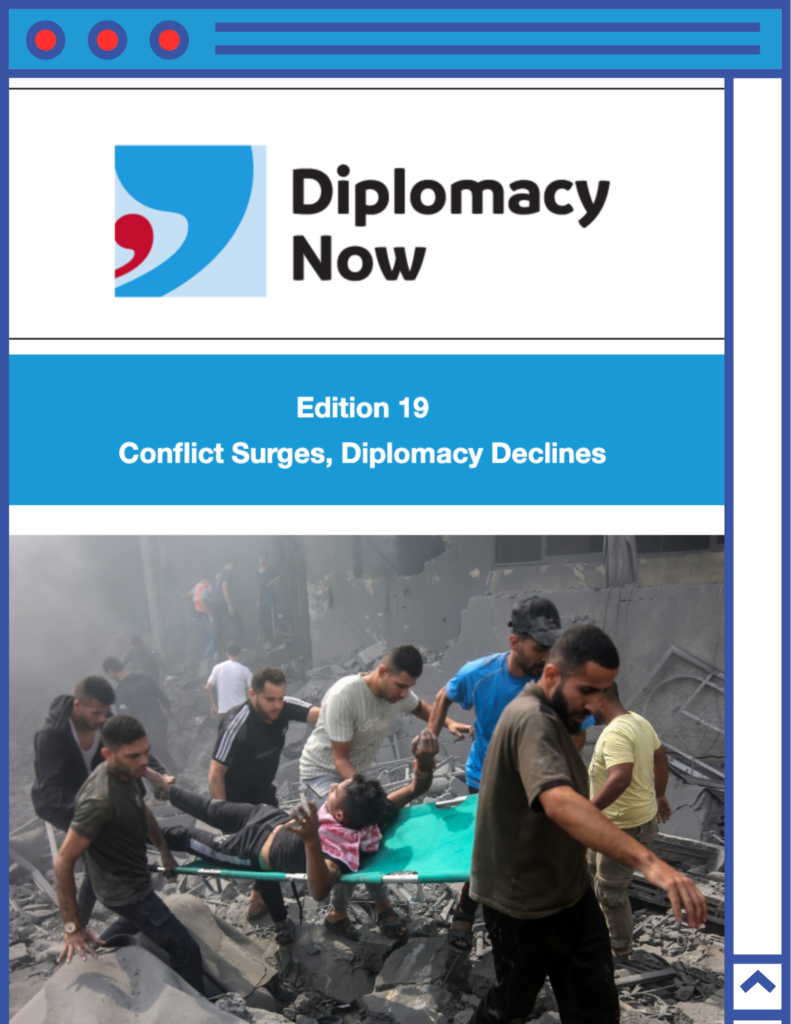The Gaza Strip has been ravaged by the ongoing war since Oct. 7, 2023. The small enclave has been battered by many conflicts and economic blockades over the years and has suffered thousands of deaths and infrastructural destruction. The failure to implement the 2021 and 2014 post-war construction plans has made Gaza doubly vulnerable. The devastation caused by past wars has already left thousands of Palestinians homeless. But today, the situation is dire. According to satellite imagery analysis by UN-Habitat and the UN Environment Programme (UNEP), the ongoing war has generated approximately 42 million metric tonnes of debris — 14 times the total debris created by all other conflicts worldwide over the past 16 years. How does the reality on the ground compare now? And will the Arab League plan succeed and break through the challenges ahead to rebuild Gaza?
The situation in Gaza reached new heights of destruction after the escalation of hostilities between Hamas and Israel erupted in 2023. Since then an estimated 50,144 Palestinians have been killed and there has been widespread destruction of homes, with around 92 percent of housing units destroyed or damaged. Over 1.8 million citizens are in urgent need of emergency shelter and essential household items. The humanitarian situation in the Gaza Strip has worsened as the international community failed to bring about an enduring ceasefire and the January ceasefire that came into effect the day before United States President Donald Trump was sworn into office on Jan. 19, 2025, failing to enter its second phase.
Plan to reconstruct Gaza amid warnings of displacement
The United Nations estimates that housing remains the most severely affected sector, accounting for the largest share of recovery needs, with $15.2 billion – or 30 percent of the total reconstruction cost – earmarked for rebuilding homes. According to the Damage Needs Assessment conducted jointly by the UN, European Union, and World Bank estimated that Gaza’s reconstruction and recovery will cost around $53.2 billion over the next decade. This colossal financial need can only be secured under the willingness and determination of several international and regional stakeholders, such as the Arab League. Dozens of reconstruction plans have been hammered out with various plans for the day-after including the formation of new independent governments. However, these plans are far away from implementation, particularly as the ceasefire has failed to enter the second phase with Israel resuming airstrikes and offensives on Gaza, jeopardizing further ceasefire negotiations.
Looking into many plans proposed by foreign consultants from European Union states and the US, they may contradict each other and marginalize the Palestinian vision. Generally, some of these plans have different purposes from alleviating the pain of the Palestinian people in Gaza and reconstructing their homes. Other plans focus on the economy rather than the urgent need of protecting the lives of Palestinians and guaranteeing their dignity and human rights. The other plans are merely technical, giving an insight into financial resources needed to rebuild the houses of Gazans, and what other human and technical resources are needed to do it.
Will the Arab League’s plan be successful?
On March 4, 2025, in Cairo, the Arab League proposed its plan to reconstruct the Gaza Strip. This plan came as a counterproposal to Donald Trump’s plan to displace Palestinians from Gaza to reconstruct it. According to the Arab League plan, a new administration committee will be formed to rule the civil affairs in the Gaza Strip, ensuring that its members are independent Palestinian technocrats unaffiliated with any political or military party. Learning from past governance experiences in Gaza, a post-war government must finally prioritize peacebuilding, economic stability, and the protection of human life in Gaza.
Opposing any other plan suggesting the establishment of an international-led government or authority in Gaza, the Arab League plan proposes a technocratic government.
Ongoing war poses challenges to implementation
One of the challenges facing the plan and its successful implementation is the ongoing security instability and the war in Gaza. The terms of ceasefire must be agreed upon and implemented solidly so that any reconstruction plan can be applied. The previous reconstruction plans in Gaza failed due to the recurring wars since 2008. Implementing plans for the reconstruction of Gaza must engage peacekeeping and independent Palestinians. It is illogical to exclude Palestinians who well know the context, aspirations, and what a promising future can look like.
The question this time remains open if the Arab League plan will be able to rebuild the Gaza Strip and if the League will finally act as a united bloc to support Palestinians, who it has previously failed. Another question is how this plan can prove to the world that the process of Gaza’s reconstruction can proceed without erasing Palestinians from their homeland. The hope is that Arab leaders unify their effort to push the plan forward and implement it in a way that would bring back life to Gaza, and its population who has been bearing the brunt of cruel life conditions for the past 16 years.
For the Arab League plan or any other plan to be complete, a Palestinian national reunification must firstly be achieved. The prolonged years of the Palestinian division worsened the economic, political, and social conditions of the Palestinian people. In the past, reunification failed as Hamas feared that its integration into the Palestinian Authority could result in its disarmament and abandonment of armed resistance. Given this context, the division must be resolved, and a possible presidential and parliamentary election must occur in coming years, which can be achieved if the League’s plan gets implemented. As stated by Mahmoud Abbas, the PA’s president, this election can only happen “if circumstances allow.” Under the auspices of the PA, the Arab Plan proposes a framework that would build on establishing a transitional administration governing the Gaza Strip and addressing Hamas’ political position in the Strip.
Reconstruction is about more than infrastructure
The reconstruction plan in Gaza cannot be confined to infrastructure alone – it must also address the underlying economic challenges that have plagued the Gaza Strip for years. With unemployment rates in Gaza dramatically skyrocketing since the war ensued, the Arab League’s plan may offer a chance to develop the Palestinian economy, and contribute to the betterment and wellbeing of Palestinians through stimulating economic growth and creating job opportunities.
While the Arab-led plan was backed by European nations, such as France, Germany, the United Kingdom, and Italy, Israel still rejected it thinking that it did not consider the realities after Hamas’ attack. The Arab League’s plan to reconstruct Gaza is a bold and necessary proposal aimed at addressing both the immediate humanitarian crisis and the long-term development needs in the Gaza Strip. It also facilitates the establishment of a new government that would keep peace in Gaza, and act independently to secure and stabilize the situation. While challenges remain and the possibility of reconstruction is far from sight, the plan offers a hope to influence a transformation in the Palestinians’ lives in Gaza. However, with Israel launching a new military campaign on Gaza after the failure of the ceasefire to progress to its second phase, reconstruction plans are now on hold. A permanent ceasefire will be a precondition for any reconstruction plan.
Omar Shaban is the founder and director of PalThink for Strategic Studies and a senior analyst and development expert with extensive experience in Palestine. His expertise includes democracy and governance, institutional development, humanitarian and emergency responses, microfinance, community development, MEAL, and fundraising. Omar has been involved in conflict resolution and national reconciliation efforts in Palestine for 15 years and has worked with numerous donors and international agencies.




